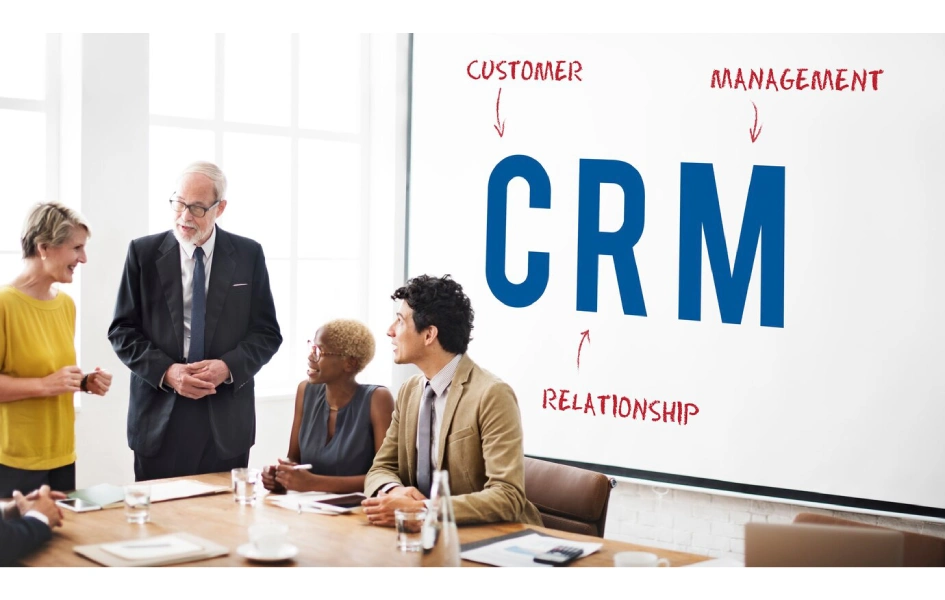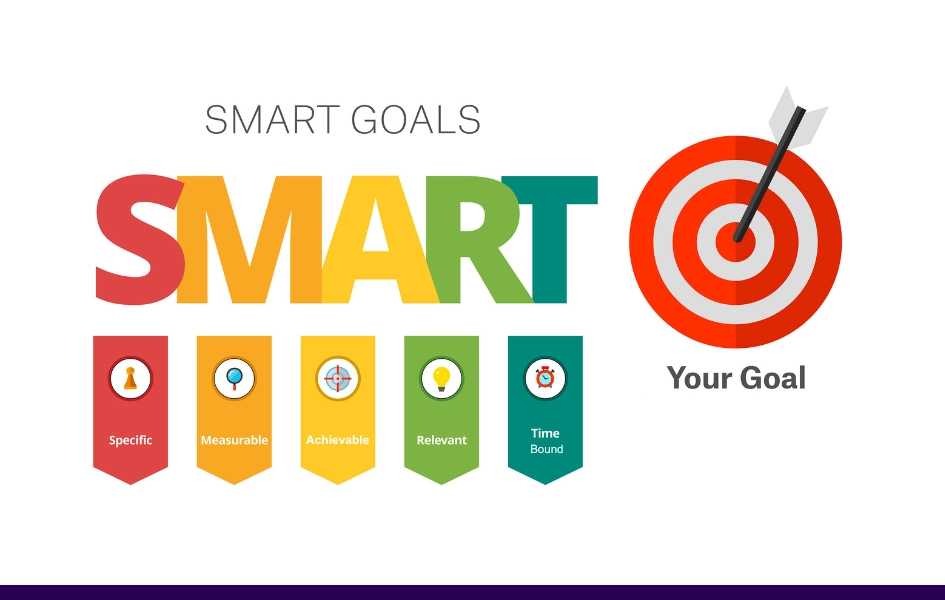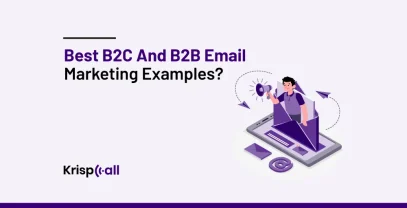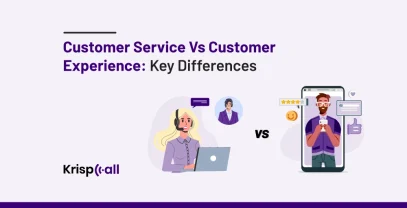Imagine walking into your favorite bakery😍, and before you say a word, the baker hands you your usual croissant, steaming hot and ready to go. Sounds nice, right? But here’s the thing: the baker isn’t a mind🧠 reader, they’re just really good at remembering your order.
Well, your business can do something similar with a customer relationship management (CRM) strategy. It’s like having a special system to remember💡 your customers, what they like, and how to make them happy. And trust me, it’s not just good for them, it’s a game-changer for your business too. To stay competitive, it’s important to keep up with the latest CRM trends that shape how businesses interact with their customers.
But how do you develop a CRM strategy that really works for your business?
Let’s find out👀 in this article.
👓 KEY HIGHLIGHTS
- A CRM strategy boosts sales and improves customer service by using data to understand customer needs and customize interactions.
- A successful CRM strategy meets business goals, including brand awareness, lead conversion, customer satisfaction, and long-term relationships.
- Consider auditing, clarifying vision, reviewing customer data, and integrating systems before planning your CRM strategy.
- To create a successful CRM strategy, set goals, know your customers, plan their journey, choose tools, train your team, use automation, personalize experiences, track performance, and utilize AI.
What is a CRM strategy?
A CRM strategy definition is a plan to boost sales and improve✅ customer service using tools like marketing campaigns and customer support. It’s about building strong relationships with customers, using data to understand their needs and customize interactions to keep them happy and loyal.

This strategy sets goals like increasing satisfaction and optimizing sales processes, guiding how a company uses its CRM system to achieve these aims.
By focusing on these goals, a business can gradually enhance its customer relationships and drive growth over time.
CRM strategy example
Suppose John wants to improve his company’s CRM strategy. He aims to boost customer satisfaction and sales by organizing customer data better and personalizing interactions. John sets goals to keep more customers and increase sales, uses Salesforce CRM to manage customer information and automate marketing, and ensures his team knows how to use these tools well. By tracking customer retention and sales numbers, John adjusts the strategy based on customer feedback and data, aiming to build stronger relationships and grow the business.
What defines a successful CRM strategy?
A successful CRM strategy is defined by its ability to achieve specific goals🎯 and objectives set by the business. It involves several key stages for managing and improving customer relationships across sales, marketing, and customer service activities. They are:
- Generating brand awareness.
- Obtaining potential customers.
- Turning leads into paying customers.
- Keeping customers satisfied and engaged.
- Building strong, lasting connections with customers.
What you need before creating your CRM strategy?
Before you start planning📝 your digital CRM strategy, there are important things to think about. Here are the main things you need to consider:
- Audit your business: Carefully look at everything in your business, like your products, how you sell them, how you talk to customers, and how well you’re doing overall. The goal is to figure out what you’re good at, where you could do better✔️, and any new opportunities or challenges you might face.
- Clarify your vision: Decide what you want your business to be in the long run and how you want to treat your customers. It’s about setting clear goals for what you want to achieve and how you want people to see your brand.
- Review Customer Data: Study the information you have about your customers, like who they are, what they like, how they buy, and what they think💭 about your business. By looking at this data, you can learn more about your customers and find ways to make them happier.
- Integrate your systems and data: Nowadays, businesses often use different computer systems to manage different parts of their work, like sales, advertising, and helping customers. Make sure these systems can easily share information so everyone can work together better and customers have a smoother experience.
How to develop a winning CRM strategy in 10 Steps?
Step 1: Define your CRM strategy goals
First, you need to figure out🔎 what you want to achieve with your CRM plan. This could include things like increasing sales by 10% in the next quarter, improving customer retention by 5% year-over-year (YOY), or raising customer satisfaction scores by 12%. Make sure these goals are SMART:

- Specific: Be clear about what you want to achieve.
- Measurable: Make sure you can track your progress.
- Achievable: Make sure your goals are realistic.
- Relevant: Ensure your goals match your overall business aims.
- Time-bound: Set a deadline for reaching your goals.
After you’ve set your goals, check if you have what you need to achieve them. Setting clear CRM goals helps you focus on what matters for your business.
Step 2: Define your target customer
It’s crucial to know your customers and potential customers well to develop buyer personas. Understanding who buys from you and why helps you attract the right leads and maintain strong customer relationships.
Here’s how you can create buyer personas:
- Check who visits your website: Look at the data to see who’s visiting your website🌐 and what they’re interested in.
- Find out where they hang out on social media: See which social media platforms your customers use the most.
- Talk to your sales and customer service teams: They talk to customers all the time, so they know what customers like and dislike.
- Ask your customers directly: Get feedback✍️ from your customers by talking to them or sending surveys.
This helps you understand your customers better, like where they live, what they need, what they like, and how they behave. So, you can do marketing that really connects with your customers.
Step 3: Define your customer journey
After defining your target customer, it’s important to outline their entire journey from initial contact to completing a sale. Analyze their demographic data to determine their online preferences and habits, which helps you pinpoint📌 how and where to engage with them effectively.
Here are some key questions to ask when mapping the customer journey:
- Who talks to the customer at each step?
- How can we make these conversations better?
- Do we communicate in a way the customer likes?
- What kind of content does the customer like or dislike?
- What is the customer trying to achieve?
- What challenges does the customer face?
Step 4: Plan your 360-degree customer experience
The next phase of your strategy focuses on making sure you have everything in place to deliver a complete customer experience. This means checking that each team within your organization has the right roles and responsibilities.
For example:
- Make sure your marketing team can understand customer needs and gather information effectively.
- Check if your sales team can automate any sales tasks to make things quicker and more efficient.
- Ensure your customer service team is capable of welcoming and assisting customers effectively.
Remember💡, it’s important to keep your communication with customers relevant and interesting at every stage of their interaction with your business.
Step 5: Choose the right tools
Businesses use CRM software to better manage relationships with customers.
When choosing a CRM platform, consider factors like the size of your business and the complexity of your interactions with customers. Look for features such as organizing customer details, tracking sales progress📈, gaining insights, automating tasks, and mobile accessibility.

Evaluate your current processes, consider cost, capabilities, and ease of use, and ensure the CRM software integrates well with your other marketing tools.
A good CRM system helps teams collaborate, stores customer data, and tracks interactions. It’s important for understanding and serving customers, and driving your CRM strategy forward.
Step 6: Train your team
After selecting the right CRM platform for your business, the next important step is to ensure that your team is adequately trained to utilize it effectively.
To train your team for your CRM strategy, you should:
- Include representatives from various departments, such as sales, customer service, and marketing, as they all play important roles in implementing the strategy.
- Provide ongoing support and resources beyond simple training sessions. This includes communicating the benefits of the strategy, especially if you’re introducing new software, and offering comprehensive documentation and a thorough onboarding process.
- Encourage your team to keep learning by sharing what they know. This helps prevent departmental barriers and ensures that everyone stays up-to-date with the latest CRM practices and tools.
Step 7: Reduce costs with automation
By using automation, you can save money💸 by avoiding repetitive tasks.
For example, with a CRM system, you can automatically enter lead information into your sales pipeline instead of doing it manually. Also, automation helps create email templates that match your brand’s style and include the recipient’s name, saving time and improving sales efforts.
This frees up your sales team to focus on building relationships with leads and closing deals🤝 faster, which ultimately reduces overall expenses
Step 8: Deliver personalized customer experiences
When you give customers personalized experiences, they feel more connected to your business, buy more from you, and stick around longer. To do this effectively, you need a solid plan that brings together different parts of your business, like marketing📢and sales, so you can understand what customers really want.
Research shows that people really like it when companies give them personalized experiences:
- About 91% of customers are more likely to buy from companies that recognize, remember, and provide them with relevant offers and recommendations.
- On the other hand, 66% of customers won’t buy from companies that don’t personalize.
Providing personalized experiences doesn’t just make customers happier; it also boosts sales and keeps them coming back for more. So, create a strong plan that focuses on personalizing your business.
Step 9 : Track your CRM performance
To ensure your team meets their targets and aligns with your CRM strategy goals, it’s crucial to track their performance. Most CRM platforms offer built-in reporting and analytics features, making it easy to monitor performance.

Utilize CRM dashboards to analyze successes and areas for improvement. By identifying opportunities for enhancement, you can experiment with new techniques and learn from mistakes.
This process allows you to optimize workflows, enhance customer experiences, and refine your overall CRM strategy. Tracking performance enables you to stay flexible and responsive to evolving business needs.
Step 10: Utilize AI
In modern CRM platforms, artificial intelligence (AI) is widely available, offering many ways to improve your CRM strategy. By using AI, you can make your sales process more efficient.
For example, AI can help turn meeting discussions into tasks automatically, create personalized emails, write content for different customer interactions, summarize important calls, and generate detailed reports.
By integrating AI into your CRM strategy, you can work smarter😎, build better relationships with customers, and stay ahead in today’s competitive business world.
Therefore, following these 10 steps can guide you in developing a winning CRM strategy that drives success for your business.
Benefits of developing a CRM strategy?
The benefits of developing a CRM strategy include:
- Better Customer Understanding: CRM software helps businesses understand their customers better by organizing and analyzing customer data. Avoiding common CRM mistakes ensures accurate data analysis and customer insights.
- Improved Customer Experience: By understanding customer needs and preferences, businesses can tailor their products and services to provide a better customer experience.
- Enhanced Collaboration: CRM strategies facilitate better collaboration between different departments within an organization, such as sales, marketing, and customer service.
- Increased Sales Efficiency: CRM systems help optimize sales processes, identify potential leads, and track interactions, leading to increased sales efficiency.
- Effective Marketing: With CRM data, businesses can create targeted marketing campaigns and personalized communications, resulting in higher engagement and conversion rates.
- Data-Driven Decision Making: CRM systems provide valuable insights and analytics, enabling businesses to make informed decisions based on data rather than intuition.
Conclusion
The goal of a CRM is to improve the customer experience and build stronger relationships by providing personalized interactions, which in turn boosts sales and service effectiveness.
By following the 10 steps outlined in this article, you can create a CRM strategy that helps you understand your customers better, improve collaboration, increase sales efficiency, and make data-driven decisions.
Each step, from setting clear goals to utilizing automation and AI, contributes to enhancing customer relationships and driving growth.
So, if your business is serious about improving your customer relationships, create your own CRM strategy today and start seeing the difference it can make.
FAQ
How to improve CRM strategy?
To improve your CRM strategy:
- Set Clear Goals: Define specific objectives like increasing sales or enhancing customer satisfaction.
- Know Your Customers: Develop detailed buyer personas to understand their needs and behaviors.
- Map Customer Journey: Identify touchpoints and optimize interactions throughout the customer lifecycle.
- Choose the Right Tools: Select CRM software that fits your business size and integrates well with existing systems.
- Train Your Team: Ensure your team is proficient in using CRM tools for effective customer engagement.
- Monitor and Adapt: Continuously evaluate performance metrics and customer feedback to refine your strategy.





